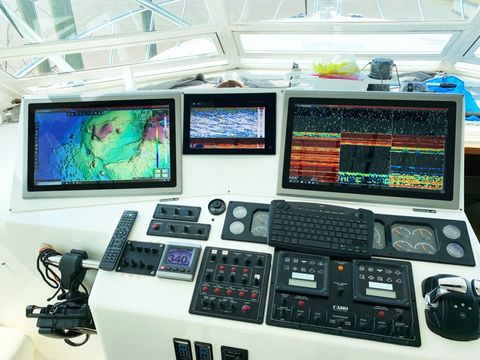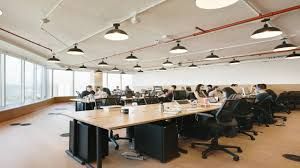Learn About Renting Apartments in Pune: Suggestions and Best Locations
Renting office space is a fundamental decision for startups, growing businesses, and established enterprises. It provides a dedicated environment for productivity, collaboration, and client engagement. With the rise of hybrid work models and flexible leases, choosing the right office space has become more strategic than ever.
Modern offices now come in various formats traditional spaces, coworking setups, and serviced offices each catering to different business needs. The demand for such spaces has evolved with technological advancements, remote work culture, and sustainability priorities. Understanding these dynamics helps businesses align their physical workspace with long-term goals.
Why Renting Office Space Matters Today
Office space rental plays a vital role in shaping company culture, professional image, and operational efficiency. It impacts how teams collaborate and how clients perceive the business.
Key reasons why it matters include:
- Flexibility and scalability: Companies can adjust space according to team size and project demands.
- Professional presence: A physical office enhances credibility for meetings and branding.
- Employee productivity: Well-designed spaces foster focus and collaboration.
- Access to infrastructure: Many office rentals include utilities, security, and maintenance.
In today’s environment, businesses are prioritizing smart layouts, energy-efficient designs, and accessible locations close to public transportation. For startups, short-term leases or coworking hubs reduce long-term commitments, allowing for agile growth.
Current Market Trends and Developments
The office rental landscape has undergone significant change over the past few years. Since 2023, demand for flexible office spaces and hybrid work environments has surged globally. Companies are increasingly adopting shared and serviced offices to optimize costs and foster collaboration.
Recent trends include:
- Rise of coworking spaces: Platforms like WeWork, Spaces, and Regus report a growing membership base.
- Sustainability focus: Green-certified buildings and energy-efficient workspaces are gaining popularity.
- Technology integration: Smart office systems with IoT and cloud-based management tools are becoming standard.
- Suburban expansion: Post-pandemic trends show more offices moving outside city centers to reduce commute times.
According to a 2024 commercial property report by CBRE, flexible office inventory in Asia-Pacific grew by 15% year-over-year, reflecting a global trend toward dynamic workspace models.
Legal and Policy Considerations
Office space rentals are subject to various legal frameworks depending on the country and city. Understanding lease agreements, tenant rights, and compliance standards helps avoid future disputes.
Key policy areas include:
- Commercial lease regulations: Many countries, such as the U.S. and India, have specific property laws governing lease duration, rent escalation, and termination clauses.
- Zoning laws: These define permissible business activities in specific locations.
- Health and safety compliance: Buildings must meet fire safety, accessibility, and ventilation standards.
- Taxation: Renters may need to account for property tax, GST (in India), or VAT (in the EU) depending on local rules.
Governments in several countries are also promoting green building certifications through incentives and tax rebates, encouraging sustainable office practices. For instance, India’s GRIHA and the U.S. LEED certification programs reward energy-efficient office developments.
Helpful Tools and Resources for Office Space Planning
Modern digital tools and platforms make office hunting and planning more manageable. From comparing spaces to calculating lease terms, these resources simplify decision-making.
Useful tools and platforms:
| Category | Tool/Platform | Description |
|---|---|---|
| Office Space Search | LoopNet, 99acres, Square Yards | Browse and compare commercial properties worldwide. |
| Layout Planning | RoomSketcher, Planner 5D | Create and visualize office layouts virtually. |
| Lease Analysis | LeaseCalcs, Cresa Tools | Evaluate financial implications and lease terms. |
| Workspace Management | Envoy, Robin Powered | Manage hybrid work schedules, desk bookings, and space utilization. |
| Legal Reference | LawDepot, Rocket Lawyer | Generate and review commercial lease agreements. |
These tools enable businesses to visualize costs, design efficient layouts, and ensure compliance before signing a lease.
Practical Advice for Choosing the Right Office Space
Selecting an office space goes beyond square footage and price. It involves aligning the environment with business objectives and employee needs.
Tips for making an informed decision:
- Evaluate location accessibility: Proximity to clients, transport, and amenities matters.
- Check infrastructure: Ensure reliable internet, electricity backup, and ventilation systems.
- Assess flexibility: Opt for leases that allow for expansion or modification.
- Consider design and comfort: Ergonomic layouts and natural lighting improve productivity.
- Review legal terms: Clarify renewal clauses, deposits, and maintenance responsibilities.
Example:
If a startup with 15 employees expects to double staff within a year, a coworking or serviced office model offers adaptability without major relocation stress.
Frequently Asked Questions (FAQs)
1. What are the main types of office spaces available today?
The primary types include traditional private offices, coworking spaces, managed offices, and virtual offices. Each offers different levels of privacy, flexibility, and amenities.
2. How long is a typical office lease term?
Lease terms can vary from short-term (6–12 months) to long-term (3–5 years). Coworking spaces often offer monthly or even daily plans for maximum flexibility.
3. What should I check before signing a lease?
Inspect the property condition, understand rent escalation clauses, confirm maintenance responsibilities, and ensure the location meets zoning regulations.
4. Are there tax benefits for renting office space?
Yes, in many regions rent and maintenance expenses are tax-deductible for business operations. However, consult a certified accountant to ensure compliance with local laws.
5. How does technology affect office space planning?
Smart technologies enable efficient space utilization, access control, and energy management, improving overall productivity and cost-effectiveness.
Conclusion
Renting the right office space is a crucial step in building a productive, credible, and sustainable business environment. From understanding market trends and legal frameworks to using digital planning tools, businesses can make informed, confident decisions.
By focusing on flexibility, accessibility, and design efficiency, organizations can create workspaces that support growth and adaptability in a changing economic landscape. Whether it’s a startup seeking agility or a corporation expanding operations, the right office space sets the foundation for long-term success





